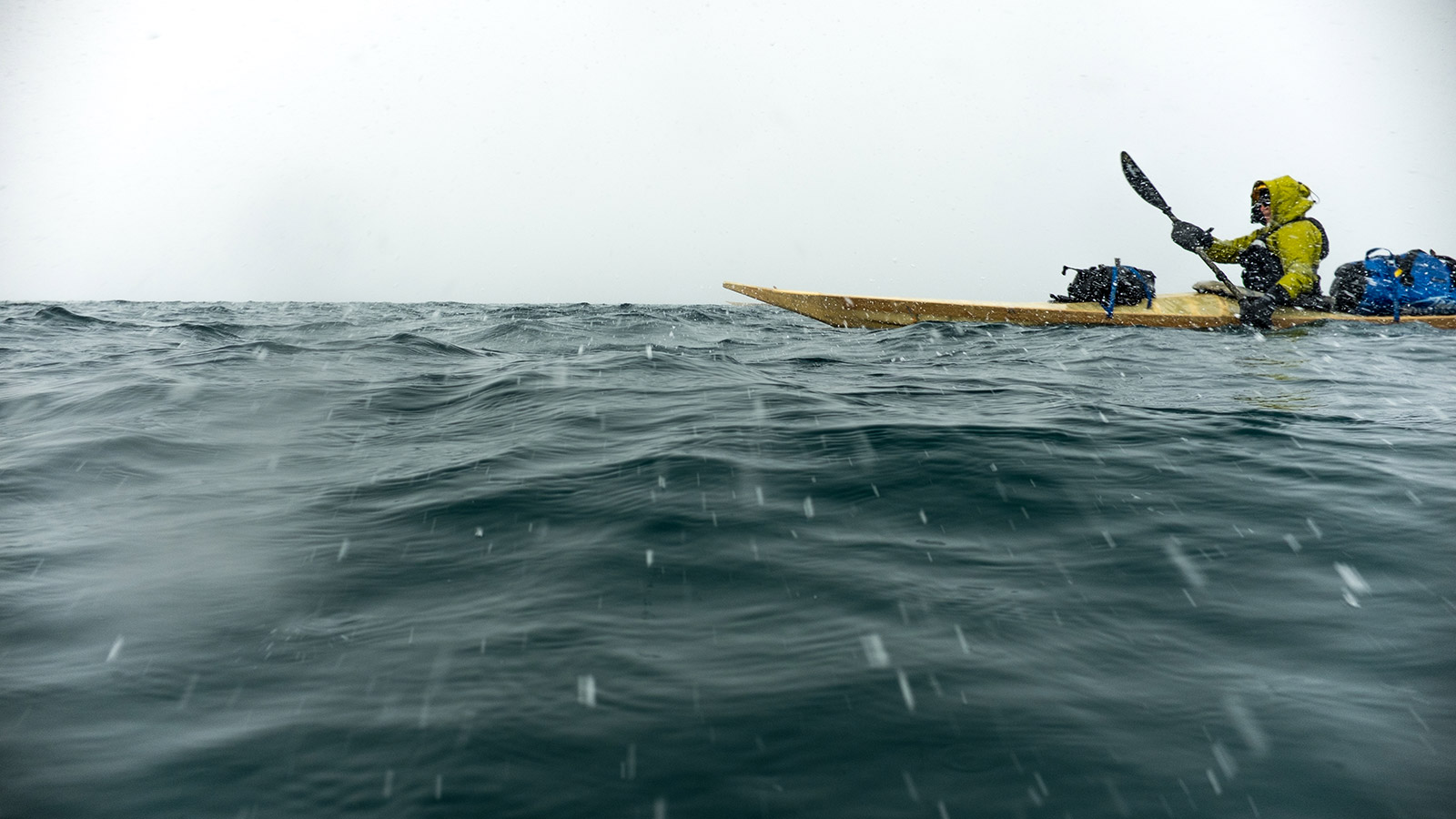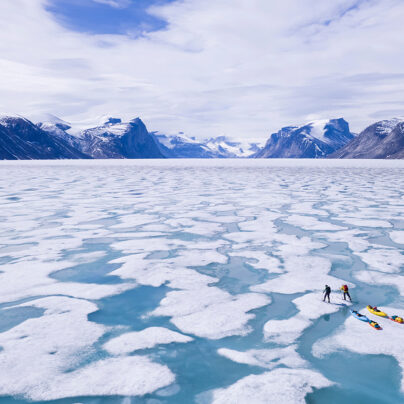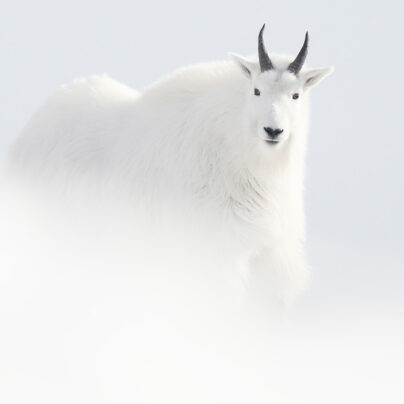Food, Water, Snow | Kayaking Baffin Island
Erik Boomer & Sarah McNair-Landry
Written by Jamie Bunchuk
The snowstorms began in August. What had started out as rain, turned to near-freezing sleet, then morphing seamlessly and without stopping into an almost-endless flurry of snow. The river was much different from what we had expected. Angry white water – framed by the daily blizzard around us – ripped at our kayaks, tore their skins, forcing yet more repairs, more delays. Few reprieves. Our handcrafted Inuit-styled kayaks – built in the traditional Baffin Island manner – were manoeuvrable as anything but weighty and portages were slow, heavy affairs. We were really starting to get hungry, we were burning more calories than we were rationed to eat, and our food cache still lay elusively out of sight. We put our heads down and just focussed on reaching it.
If you were ever struggling to get a cut just right, or a piece of wood was stubbornly refusing to fit into place, you just had to remind yourself that at least you didn’t have to chew the timber with your teeth to bend it into shape. You didn’t have to gnaw at the cuts to fit them into specific grooves, or use super primitive tools.
We thought it would be a cool project to research these traditional Baffin kayaks, build them, and then paddle them across the island of their birth. Through this, it was hoped that the expedition might inspire the local community and the wider international public to get interested in the practice of traditional kayak building. For over a month, four of us – Erik Boomer, Katherine Breen, and Eric and Sarah McNair-Landry – worked out of a high school workshop in Iqaluit building the kayaks, also watching school children make their own miniature versions at the same time. The amazing thing about Inuit kayaks is that there are no nails or screws involved; everything is either tongue-in-groove construction or lashed together. The boats are built exactly to your body dimensions, so everybody has a different-sized, totally bespoke vessel at the end of the build.
A lot of the joy from building our own kayaks came from thinking about how they must have been built in the past. If you were ever struggling to get a cut just right, or a piece of wood was stubbornly refusing to fit into place, you just had to remind yourself that at least you didn’t have to chew the timber with your teeth to bend it into shape. You didn’t have to gnaw at the cuts to fit them into specific grooves, or use super primitive tools. Even with modern tools, the whole process took us a good two months before we could even get the boats water-ready to start the expedition proper. We were very fortunate. Building one’s boat own gave us a good perspective across the whole journey about the region’s people who had paddled that way before us.
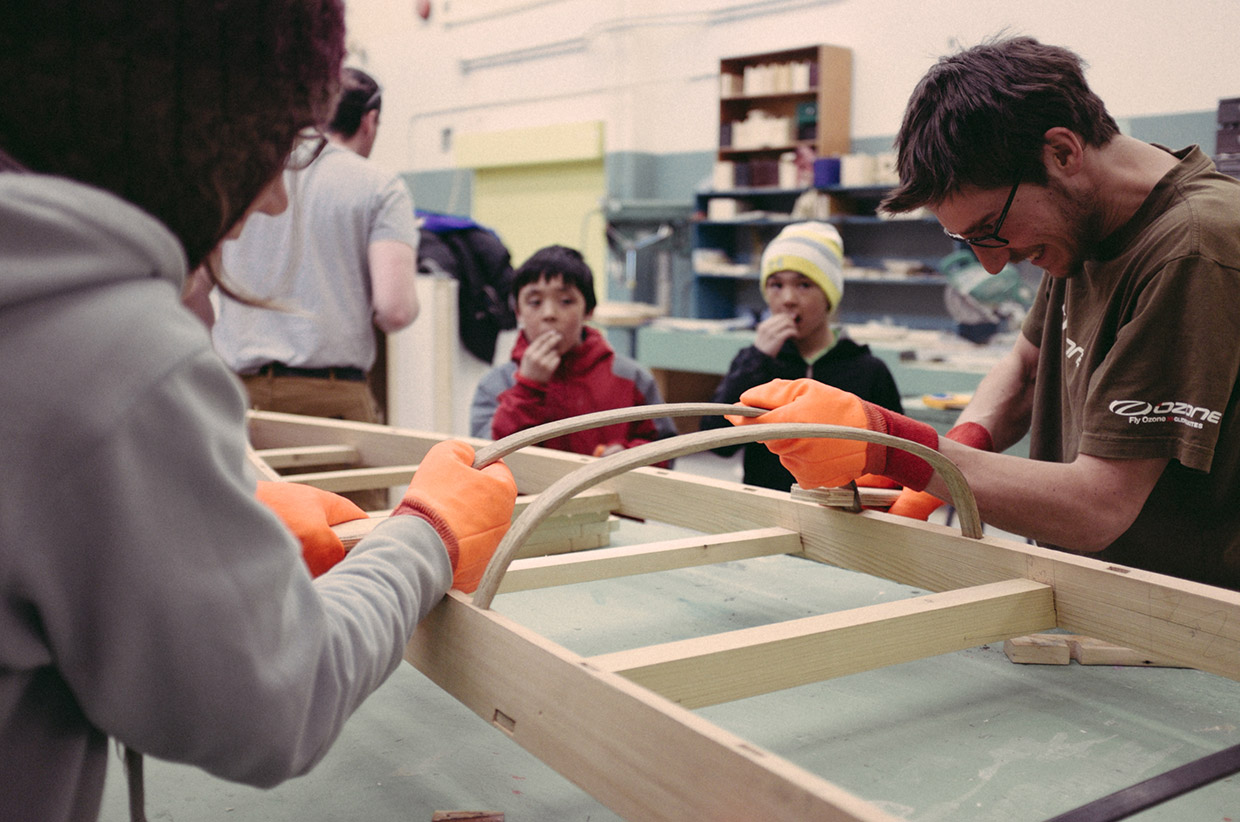

When the rapids were too big to haul the boats we’d have to unload them and start portaging our gear and often it would take us three to four shuttles back and forth to get everything. A four-kilometre portage would take us all day, just hiking back and forth, back and forth, shuffling stuff. It was truly morale sapping. All the time it just kept snowing; we could only laugh about it in the end: ‘oh here comes another little flurry again’ was the running joke. Ever the snow came down all around us and before we knew it the landscape was blanketed in white. We still had another month ahead of us; soon we’d be hitting the Arctic Ocean which was even cooler than inland. It was a big turning point, and things just got harder from then on out. Hard and cold.
If you were ever struggling to get a cut just right, or a piece of wood was stubbornly refusing to fit into place, you just had to remind yourself that at least you didn’t have to chew the timber with your teeth to bend it into shape. You didn’t have to gnaw at the cuts to fit them into specific grooves, or use super primitive tools.
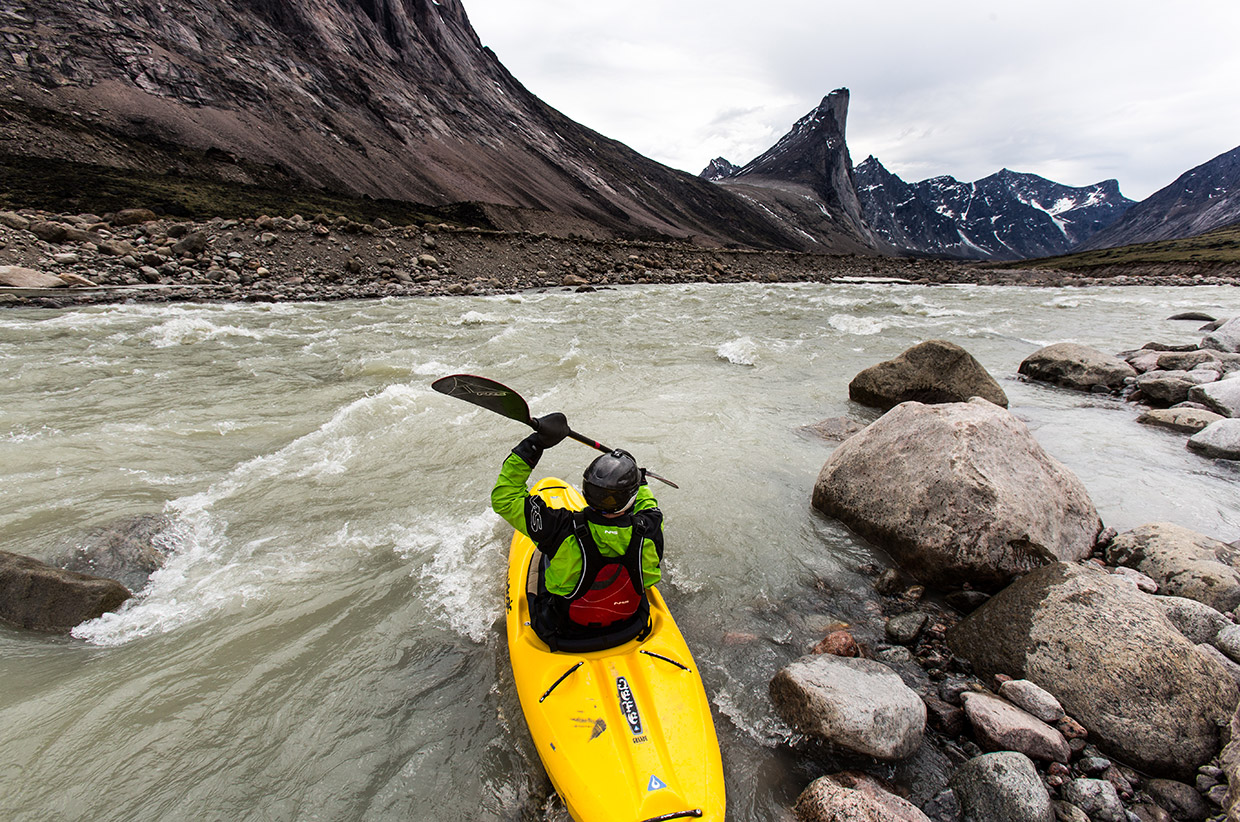

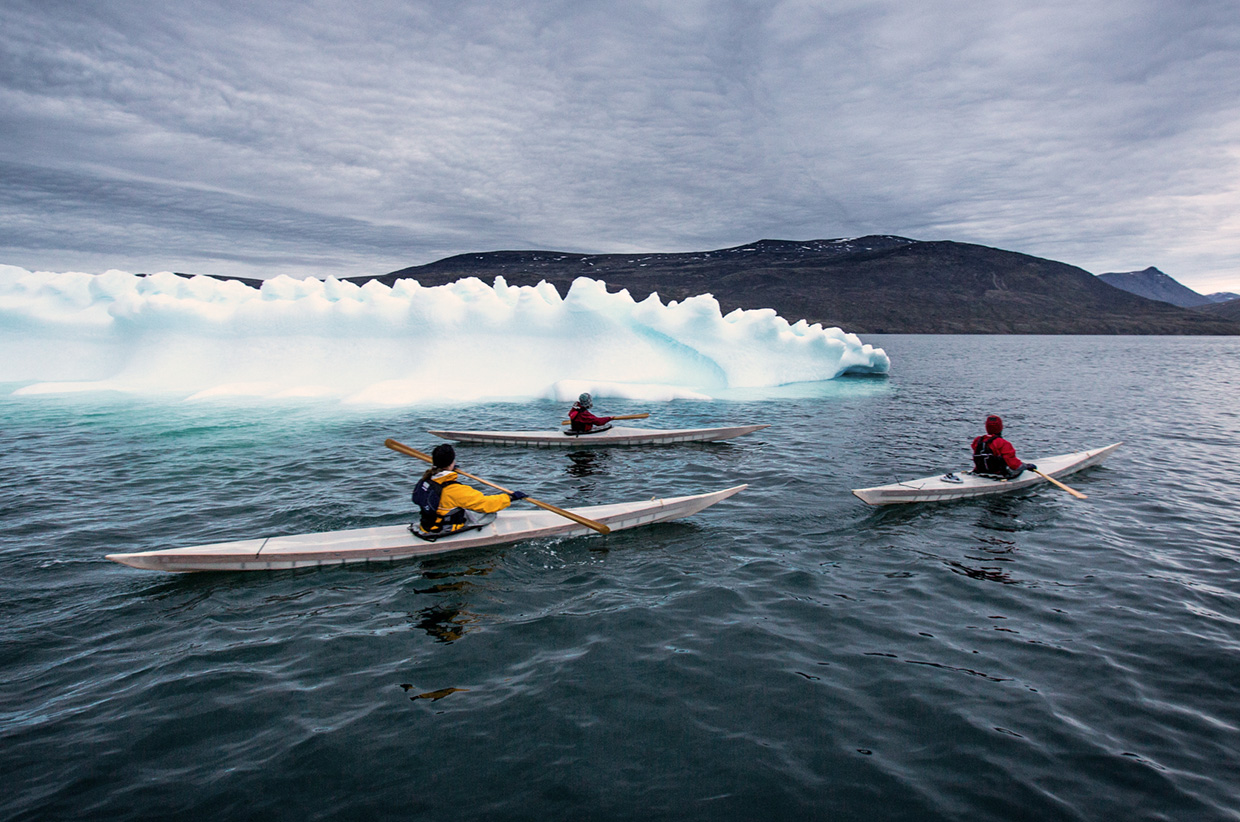
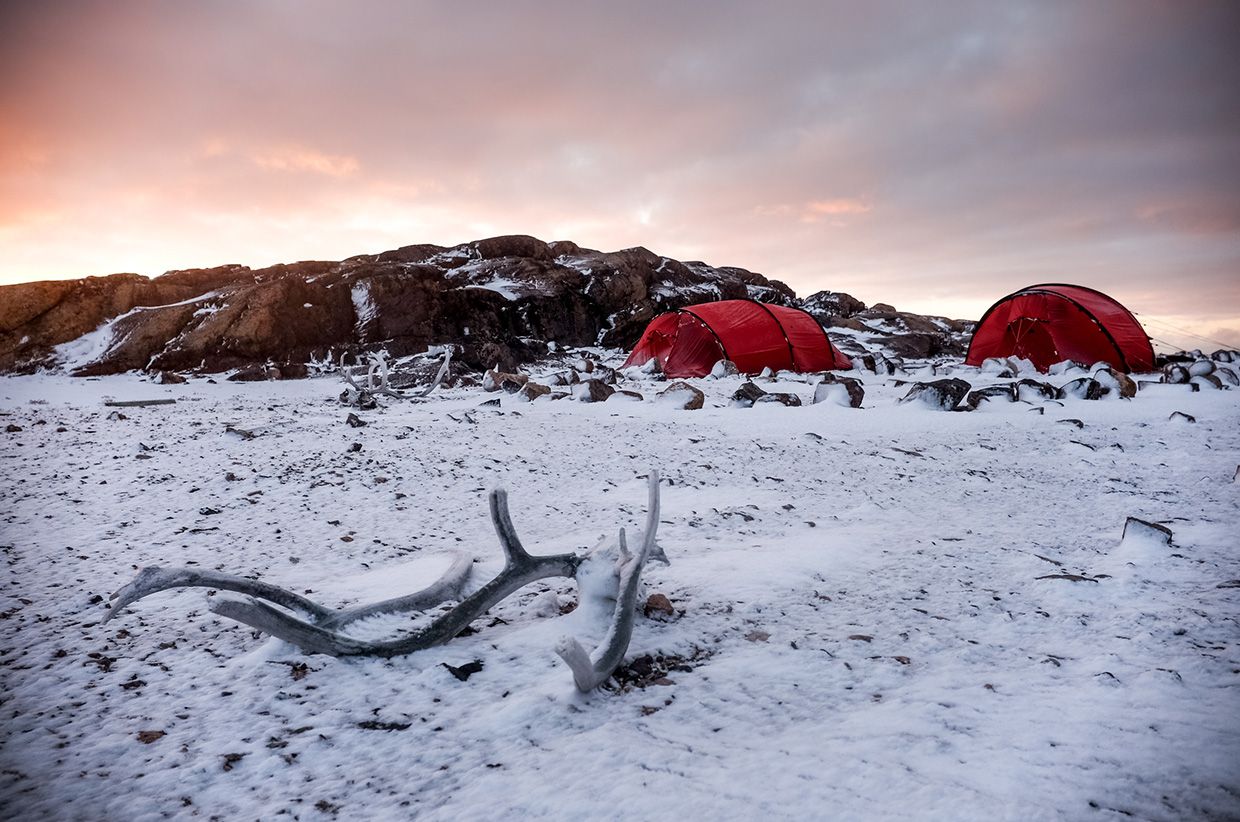
If you were ever struggling to get a cut just right, or a piece of wood was stubbornly refusing to fit into place, you just had to remind yourself that at least you didn’t have to chew the timber with your teeth to bend it into shape. You didn’t have to gnaw at the cuts to fit them into specific grooves, or use super primitive tools.
Getting to the cache was a good halfway point but it certainly didn’t mark the end of the difficulties. By this point, snow and rain had precipitated every day for two weeks solid. Every evening we would pack away our gear still wet; every morning we’d put it on still wet. It was a bitter challenge as we pushed past the site of our food dump in series of portages to get back to the Arctic Ocean and the final end stretch. By then it was September and it was cold; standing water was freezing everywhere; freezing hard enough to support your body weight. September storms were rolling in and 20-knot headwinds were just nailing us in the boats day after day after day.
Added to that, whilst traversing the coast we had to contend with the tides, which mixed with narrow fjords, the swell ripping up and down in the big pinches to create large tidal rapids. These came as almost a complete surprise to us all. You had to treat the ocean as a white-water river, trying to hop into ocean-eddies or behind islands where the currents weren’t as strong. Sometimes we’d come up to rapids that would completely block our way and we’d have to wait. Either that or we’d try to portage around them, sometimes land-hopping over islands to get through. On occasion we were lucky; we might stop and take a lunch break, and by the time you’d finished the rapids would have completely subsided with the tide; the seascape looking placid and entirely different. But the ocean remained scary nonetheless. Often you’d be more than a kilometre out from land, paddling from fjord to fjord, when all of a sudden you’d see boils and whirlpools forming around you. Having a flip out there would turn it in a very bad situation very quickly. Yet we couldn’t stop and take days out, even if the weather was truly terrible; either the four of us stayed where we were, starved or ended up calling a rescue, or we had to carry on, regardless of the state of heaving ocean.
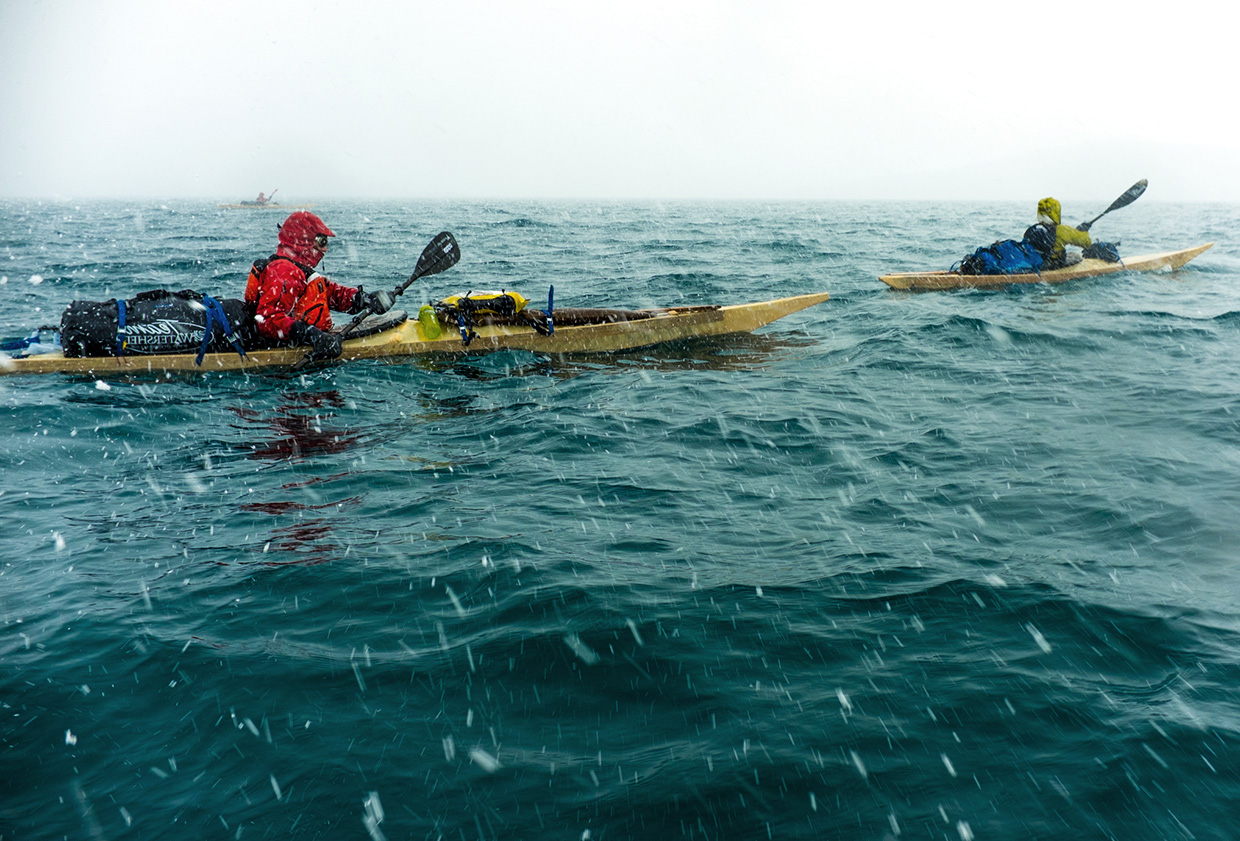
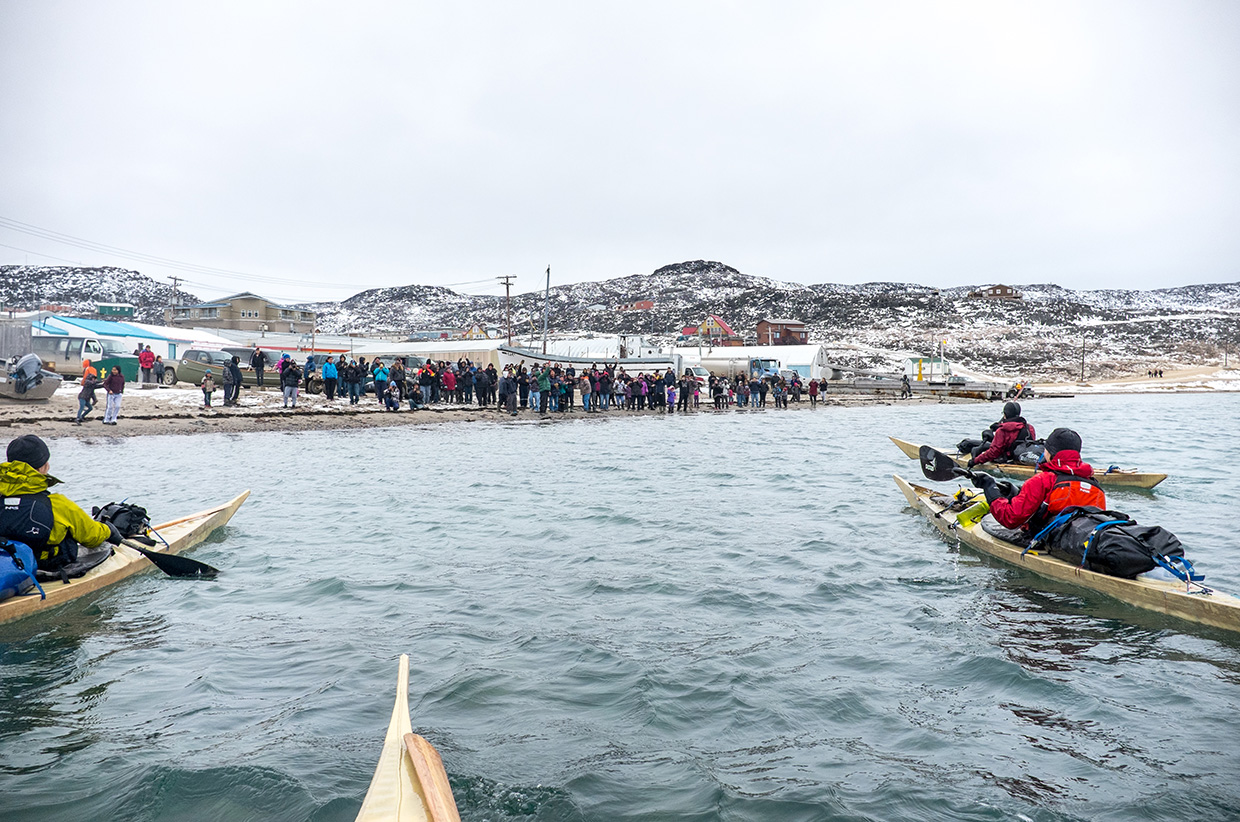
A hunter out searching for seals was the first to spot our return to frequented waters. He had heard that we were approaching his community, and with the forethought that he might run into us, brought four pairs of new socks as a present. Not too long after meeting the hunter, a larger boat circled around and rafted up beside us. A family heading out to their cabin for the weekend spoiled us with hot chocolate, bannock (local bread), sweets and a big frozen chunk of reindeer meat. It was really awesome. When you haven’t seen anyone in two months and those kind people are the first ones you see, the first people from the outside world you have contact with – it really put a smile on all our faces.
The next day we pulled into our end point, the community of Cape Dorset. The inhabitants had heard we were coming, had followed our progress and spotted us out in the ocean. It was a pretty amazing way to end the expedition; a couple of hundred people came down to greet us, letting off fireworks, cheering, honking horns. We could not have imagined a better welcome. As we got out of our boats, people hugged and shook our hands. Our kayaks were carried up on shore, and the community gathered in a big circle around our boats and us to say a prayer for our safe passage. In true northern style, we were then taken to a community square dance party they held in our honour. We spent our first night – after a good meal and a hot shower – dancing until the early hours, until the stars shined bright and the cold ocean stilled, as if mirroring the long-anticipated rest we now, finally, had the privilege to enjoy.
Watch the film from this expedition: Expedition Q – A Crossing Of Baffin Island on Sidetracked TV


Erik Boomer and Canadian polar adventurer Sarah McNair-Landry recently completed the gruelling 65-day expedition across Baffin Island, covering over a 1000km by kayak, ski and foot. Avoiding crevasses to cross the largest Icecap on Baffin Island, Boomer, Sarah and two friends descended into the Weasel River valley. Here, Boomer did a first descent of the class 5 glacier fed river surrounded by some of the world’s tallest cliffs. This was only the first week on a two-month expedition. At the ocean the team picked up their traditional Inuit style kayaks that they hand built themselves, and followed old traditional Inuit routes across Baffin. Tidal rapids, portages, snowstorms and polar bears were a few of the many challenges along the way.
For more information visit their website: pittarak.com



